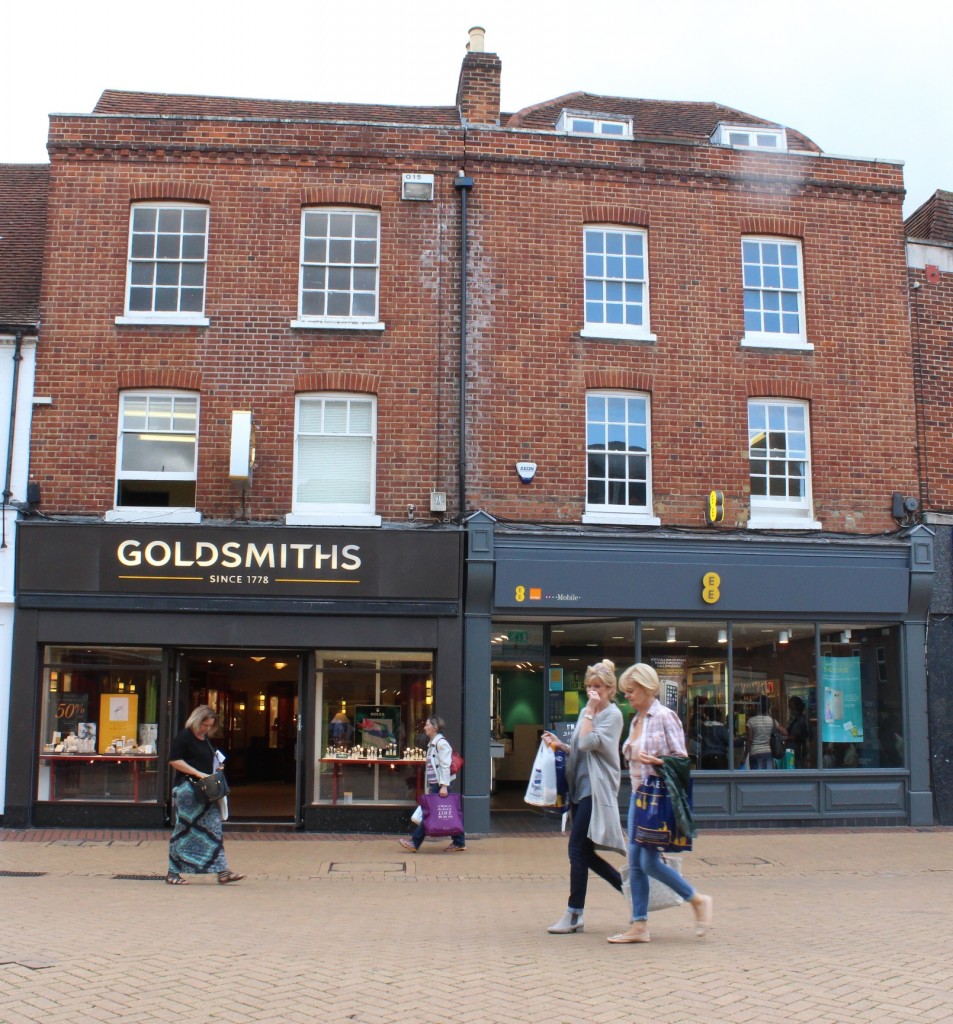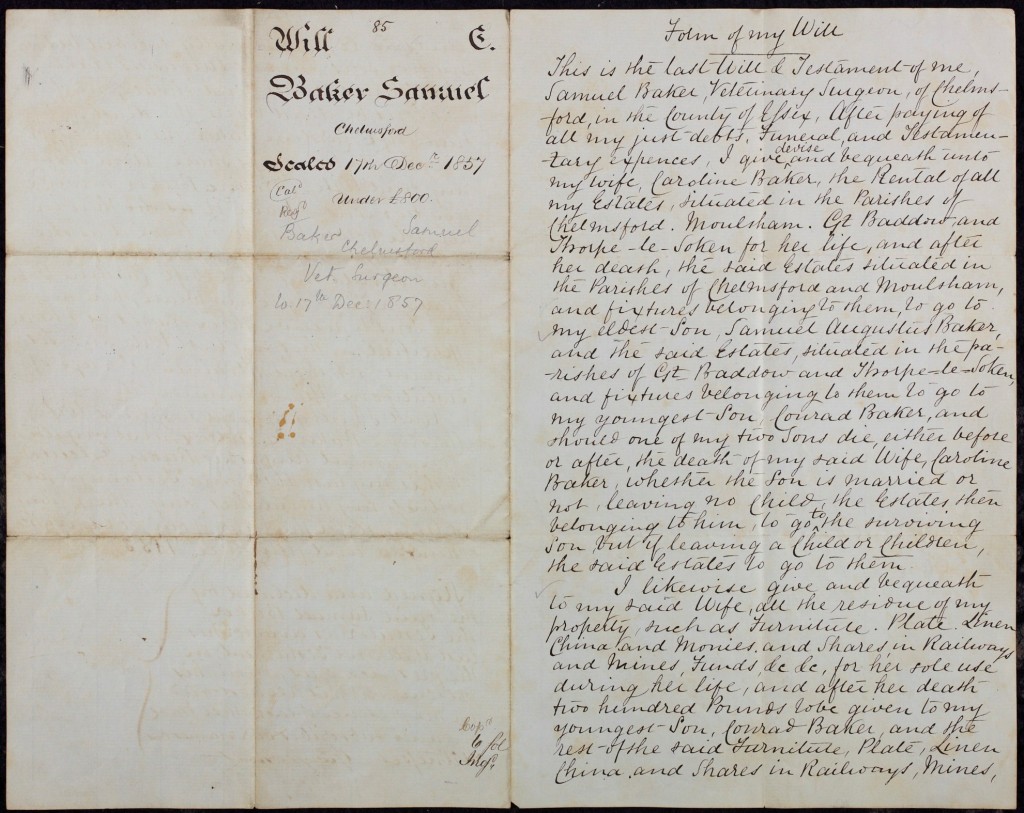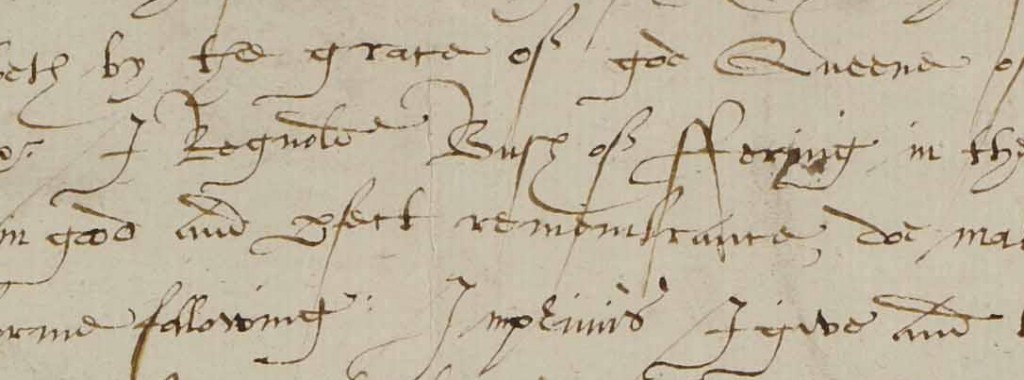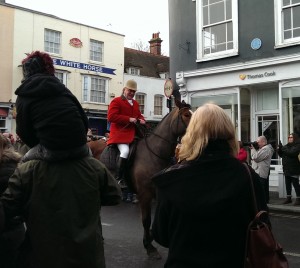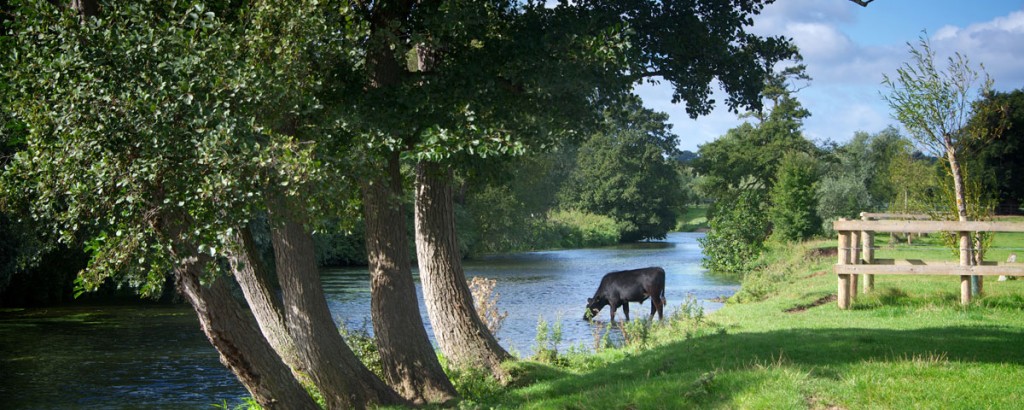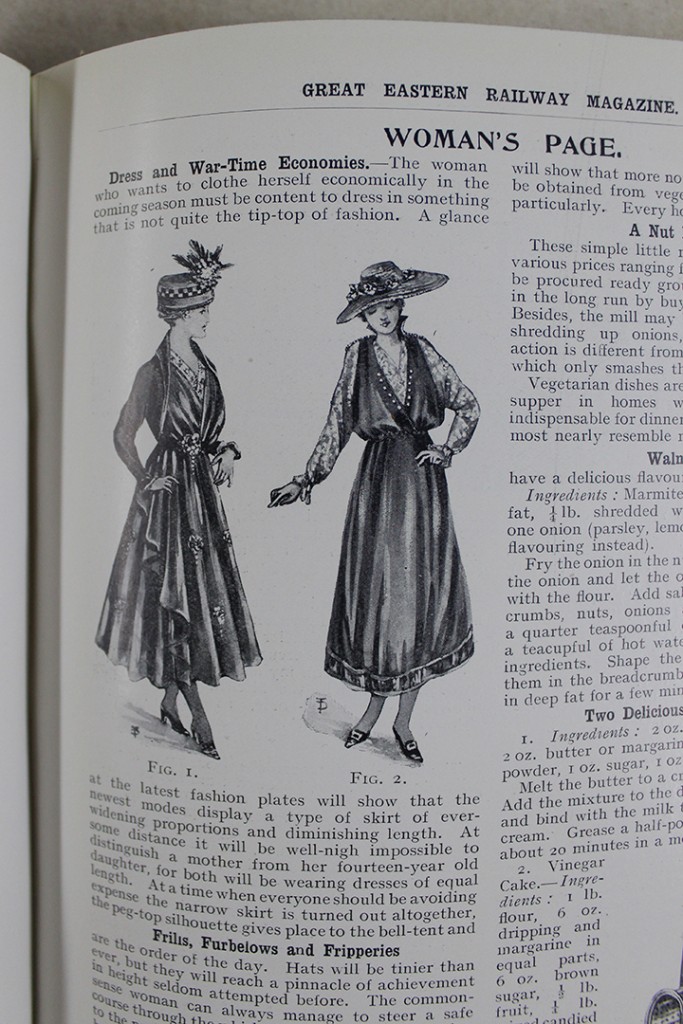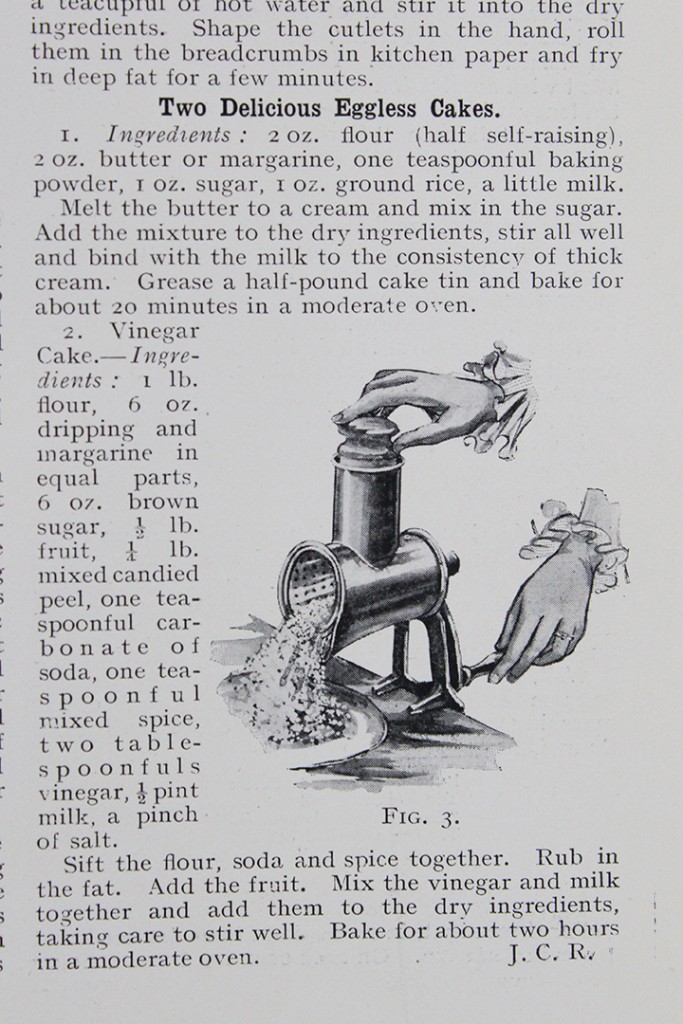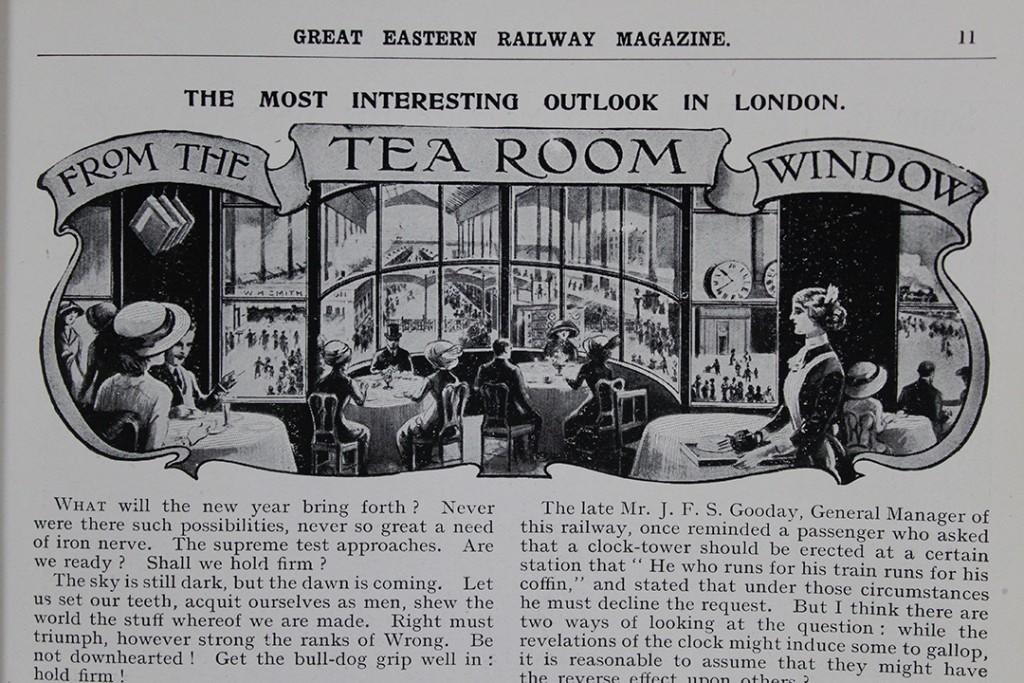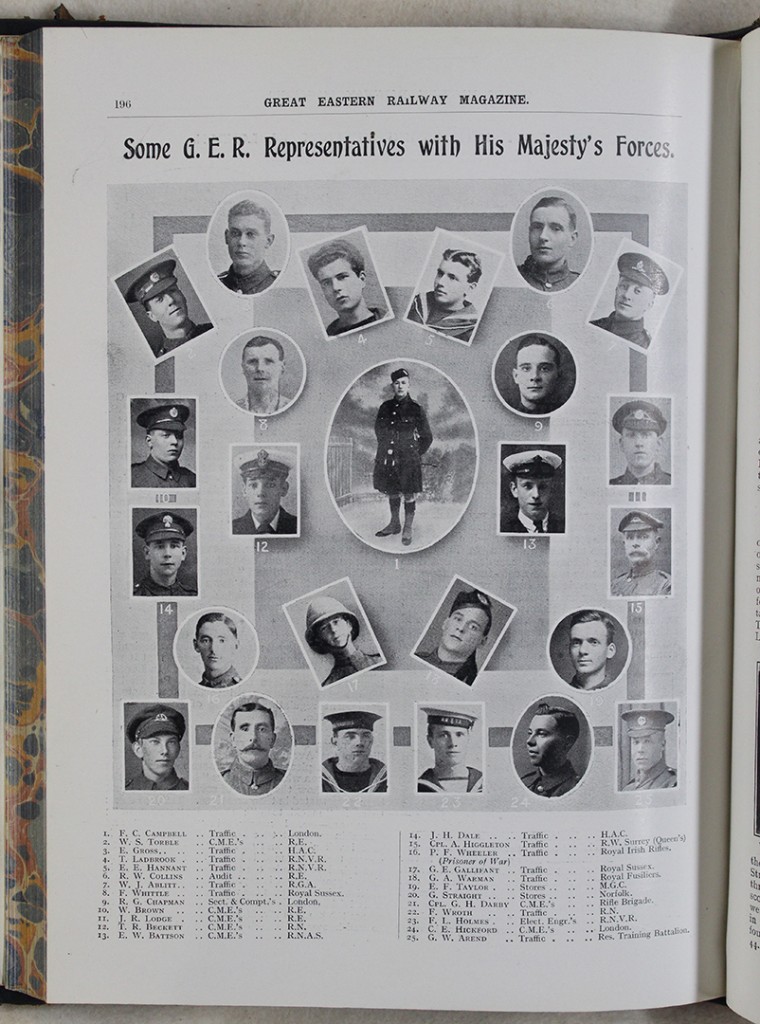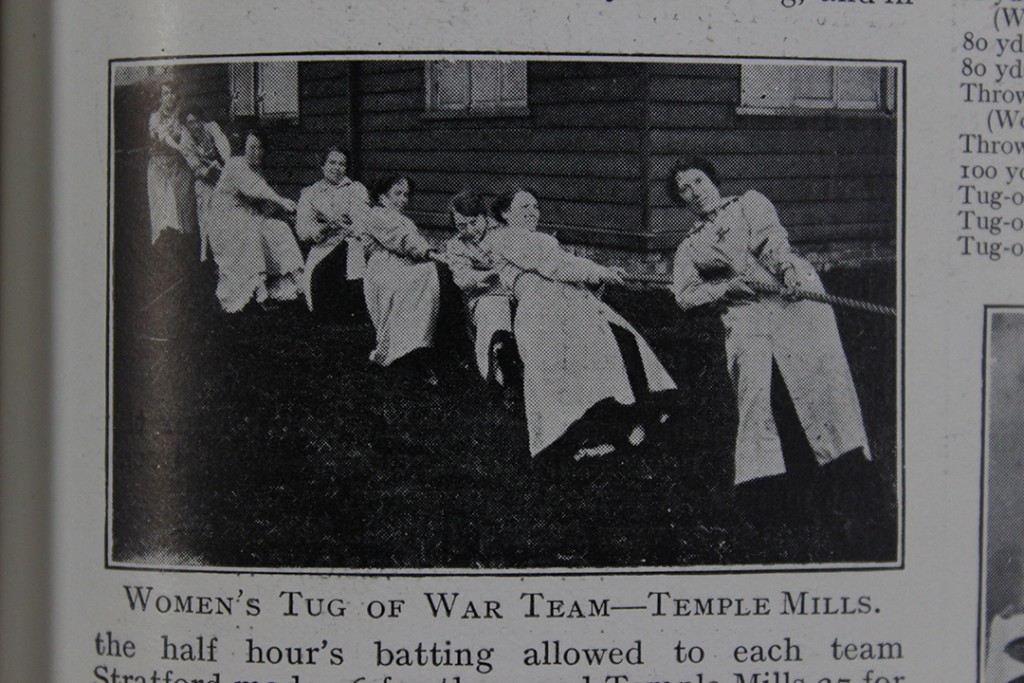In the seventh post in our series looking at the history of Chelmsford High Street, Ashleigh Hudson looks at no. 58 High Street through the centuries. Find out more about the project here.
No. 58 Chelmsford High Street is today occupied by the jewellers, Goldsmiths. John Walker’s 1591 map of Chelmsford identifies a small property named Felsteds on this site. The shop took its name from Henry of Felsted and his son Robert, who purchased the shop in the early 14th century. By the time Walker made his survey the shop was owned by Thomas Hawes.
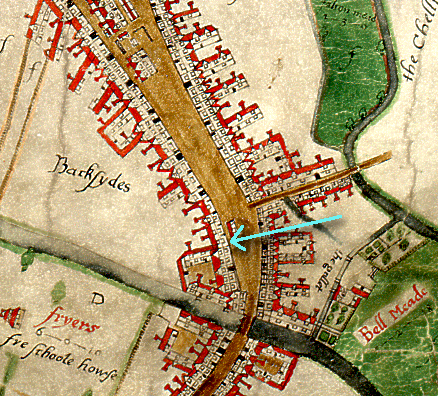
Extract from John Walker’s 1591 map of Chelmsford pointing out the site of no.58 High Street (D/DM P1)
Felsteds was one of the smallest properties fronting the west side of the high street and was recorded as having only 2 hearths in the 17th century. By 1708 the property was occupied by a musician, James Wright. Wright’s will bequeathed a range of musical instruments, bows and strings to his granddaughters, Ann and Lettice Wyatt.

Extract from the will of James Wright, 1708, bequeathing his musical instruments to his granddaughters (D/ABW 79/191)
Wills are a fantastic source of information which can tell us a great deal about the person who wrote it, particularly in terms of family relations. Wills give a good indication of an individual’s personal wealth, but they can also reveal the items and possessions individuals valued. One would imagine that as a musician, James Wright would have highly valued his collection of instruments.
Wills also provide evidence of property ownership. From 1841 the property was occupied by veterinary surgeon Samuel Baker and his family and we know from Baker’s will that after his death the property passed to his wife, Caroline Baker. The property stayed in the Baker family into the 20th century.
Throughout most of the 20th century, the site housed various jewellers. From 1922, the jeweller Oram and Sons occupied the site and continued to do so until the 1940s when the store came under the ownership of W.G Webber. This continuity has continued to the present day, with the jewellery chain Goldsmiths occupying the site today.
If you would like to find out more about this property, see Hilda Grieves’ detailed history of Chelmsford, The Sleepers and The Shadows. The Essex Record Office has a fantastic collection of wills, many of which have been digitised and can be accessed through Essex Archives Online.
Information compiled from the research and report produced by ERO Archive Assistant, Sarah Ensor.

